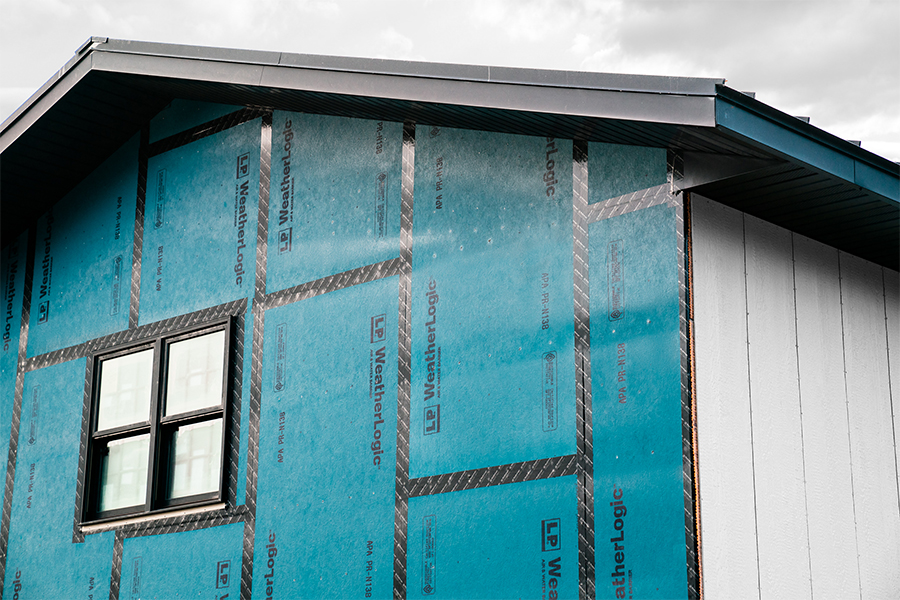Industry Trends5 min
4 Sustainable Construction Trends
Sustainable construction is continuing to influence the building industry. As we face rising energy costs, material shortages and even stronger storms caused by warmer temperatures, homebuyers are looking at ways to create a home that's more sustainable and less harmful to the environment. Let's take a look at the sustainability trends you'll be seeing in 2022 and how you can respond to translate value to your homeowners.
Planning for Maximum Value with Sustainable Construction
Green construction is an umbrella term referring to the use of sustainable processes and materials during the building process. If you think you're seeing more construction plans incorporating green technology, you're right. Projects intended to be more environmentally responsible and sustainable are becoming much more common during all stages of homebuilding, including design, construction and maintenance.
4 Sustainable Construction Trends and How to Offer Value
There are many ways to reduce environmental impact in construction at every step of the build process, from product selection to the work on the jobsite itself. Check out how you can participate in environmental sustainability practices in the construction industry:
Trend #1: Choosing sustainable partners
Action item: Before you begin a build, prioritize green construction. Research the companies you partner with to make sure they value sustainability.
Translating value to your customers: LP Building Solutions has been consistent in our commitment to sustainable sourcing and environmental management, revealing that LP is playing a significant role in the future of green building. Show your clients the level of commitment demonstrated by your partners.
Trend #2: Reduce waste
Action item: Plan ahead and work to make fewer cuts. Use as much of the product as possible and dispose of any waste properly in a way that will not impact the surrounding area.
Translating value to your customers: When your clients visit the jobsite, the dumpster is a visual statement of the amount of waste produced. An overflowing bin filled with wasted building materials and recyclables could erase all the good words about green construction.
Pro tip: See how Kyle Stumpenhorst planned all his cuts before reaching for the saw.
Trend #3: Work to reduce environmental impact with products
Action item: Build with sustainable green building materials made from durable wood. The LP Structural Solutions portfolio of products all rely on engineered wood to deliver outstanding strength and resilience.
Translating value to your customers: Show customers the differences between plywood and OSB, explaining the LP Structural Solutions portfolio is made from wood sourced through programs certified under the Sustainable Forestry Initiative®.
Explain the differences between the two building materials to your customers with product demonstration videos like this. They look at you as the expert and will appreciate the education.
Trend #4: View sustainability with a broader lens
Action item: Consider building materials that can help improve energy efficiency and long-term comfort within the home.
Translating value to your customers**:** Explain how LP® TechShield® Radiant Barrier helps reduce attic temperatures by up to 30° F, which improves energy efficiency and helps increase the lifespan of HVAC systems. Share articles such as this one to help explain the added benefits of products designed with purpose.
LP is continuing to ensure its engineered wood products are sourced sustainably and working to increase resiliency in our home builds––whether it's adding strength to fight wasted energy or withstand wind, rain and hail.
“We are watching moisture and wind challenges closely,” says Craig Miles, Vice President of National Sales, OSB Marketing and Planning, LP Building Solutions. “As part of that, we have LP WeatherLogic® Air & Water Barrier to try to better stand up to both.” LP is continuing to ensure its engineered wood products are sourced sustainably while pushing to innovate more resilient building materials.

Miles believes sustainability trends in 2022 will include greater education opportunities. "We are also working with builders on expanding their knowledge of the science behind disaster-resilient building materials. When builders hear 'resiliency,' they often think big dollar aftermarket projects. We want to show builders that making smaller, impactful changes--from the beginning of the build--can significantly improve resiliency."
To learn more about LP building materials that are also proven to Defend Your Build® against anything that comes its way, from hail and high water to fire and heat, explore our full suite of sustainable and resilient building solutions.
Continue Reading
Resiliency Solutions
5 minIntroducing LP® SmartSide® ExpertFinish® Naturals Collection™: Nature-Inspired Beauty Meets Engineered Performance
We're excited to introduce the LP® SmartSide® ExpertFinish® Naturals Collection™, a bold new addition to our trusted line of engineered wood siding and trim that delivers the warmth and beauty of nature with the advanced protection and performance builders and homeowners expect.
Labor Solutions
5 minChoosing the Right LP® Structural Solutions Product for Your Build
When it comes to building strong, reliable, and high-performing structures, the materials you choose matter. At LP Building Solutions, we understand that every project, whether it's a single-family home or a multifamily development, requires structural components that meet your needs for strength, durability, and efficiency.
Sustainability Solutions
5 minBuilding a More Sustainable Future with LP Building Solutions
In today's world, sustainability is no longer just a buzzword, it's a blueprint for responsible living and smarter building. As the construction industry seeks ways to reduce its environmental footprint, LP Building Solutions is focused on providing innovative building materials for eco-conscious builders to help reshape what it means to build sustainably
News & Stories3 min
History of Partnership with Gary Sinise Foundation
The LP Foundation is a proud partner of the Gary Sinise Foundation, which supports wounded veterans in several ways. You can learn more about the LP Foundation here.